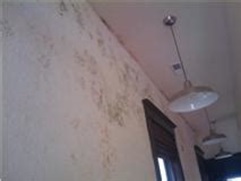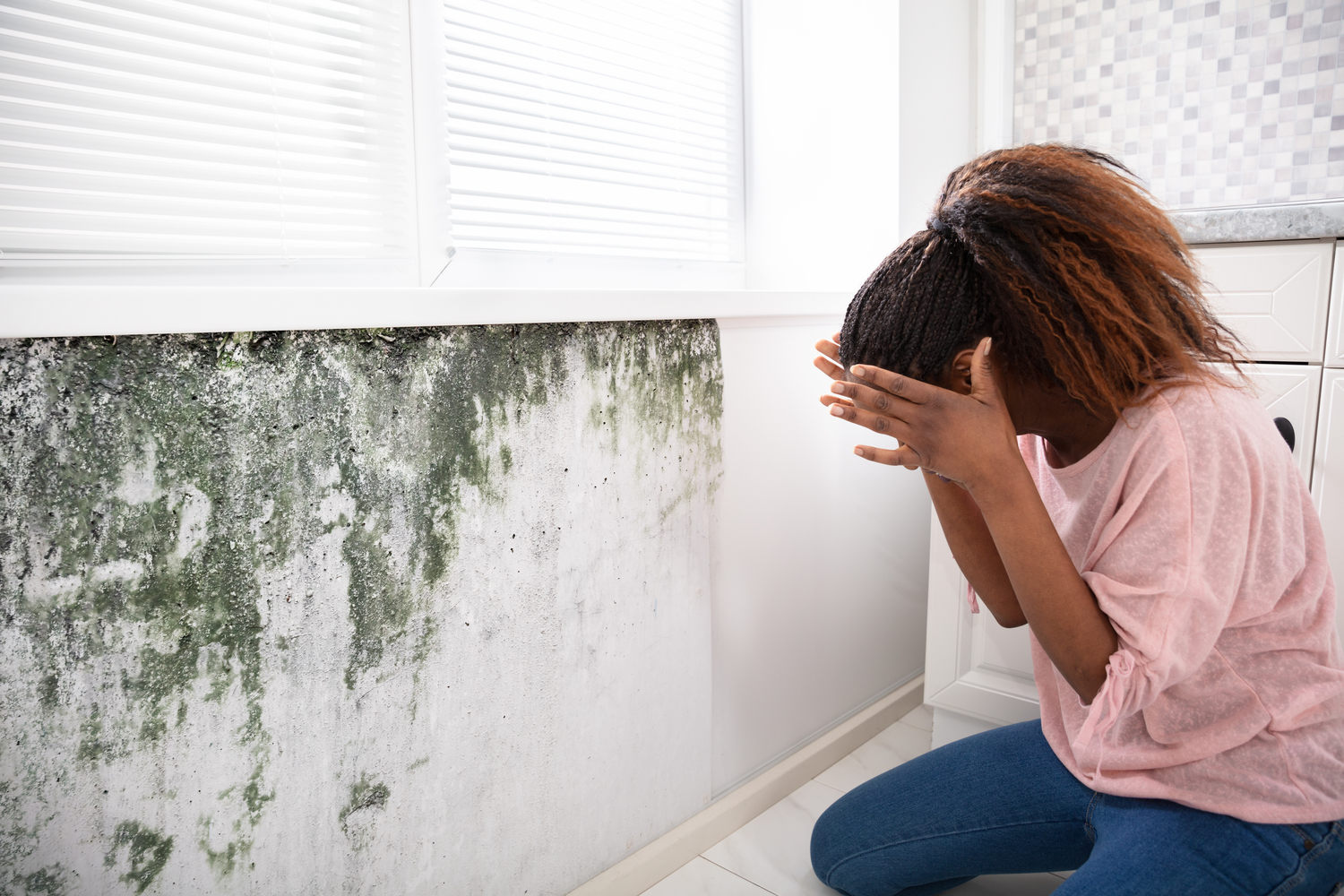Many times we are asked at Water Mold Fire Restoration whether mold will grow on plaster. The simple answer is “NO’. However… it’s important to keep reading. There’s more to this question and that answer than meets the eye.
The plaster itself is not a food source for mold to grow on. Mold can’t consume it. Plaster is non-porous (not permeable to water, air, or other fluids) and not organic. It is made with a lime or clay base and is very similar to concrete. That doesn’t mean that you won’t see mold on plaster walls. It just means that the mold isn’t growing because of the plaster.

When You Do See Mold on Plaster
It is possible to see mold on plaster walls. When this occurs the mold is eating and digesting whatever is on the plaster. It could be paint, it could be organic dust particles, or it could be growing through cracks in the plaster while it is consuming whatever is behind the plaster.
In older homes, those built in the 1930’s and before, plaster was mixed and then spread over wood lath that had been nailed to the house’s studs. If your home was built in this era, and the walls are original to the home, it probably has wooden lath behind the plaster. These wooden lath are susceptible to mold growth.
During the 1930’s through World War II, the construction industries moved toward the use of prefab products like plywood and a special drywall. This drywall product, sometimes referred to as “button board”, was slightly thicker than today’s standard drywall products and was usually 2’ x 4’ in size. These drywall prefab products were constructed much like today’s drywall, having a paper backing on each side of it. Even though there is plaster over top of this drywall, the paper backing is susceptible to mold.
If the plaster walls are painted, especially with a latex paint, mold can grow on the paint, but most people just assume that the mold is growing on the plaster. Latex is an organic material and organic materials are a nutrient for mold.
It Might Not Be Mold
It is possible that what you see may not be mold, it could be efflorescence. Efflorescence is a crystalline, salt-like deposit found on concrete, masonry, or plaster (plaster may be non-porous but water can pass through gaps and cracks). As water moves through these materials, it brings with it unbounded salts. When the water evaporates, it leaves a fluffy white substance behind. You can distinguish between efflorescence and mold by their odor (mold will smell musty, efflorescence will not). You can also do a simple water test. If you spray water on efflorescence it will begin to dissolve, mold will not. Efflorescence is harmless and will not develop on wooden materials or plants.
Dangers of Mold Exposure
Mold is nature’s way of eliminating non-viable (dead) organic materials, be they plant of animal. Mold is everywhere at all times, both inside structures and outdoors. Unless you are particularly sensitive to mold and mold spores, mold is usually not a problem. It is only when mold reaches higher concentrations indoors that it becomes a problem to your home and your health.
Mold can enter your home in many different ways. It can come in on your clothes, your shoes, through open doors and windows, and on your pets and plants. Unless mold spores land on or near a source of food and moisture it will not grow. But if conditions are right (or wrong in this case), mold will begin to grow and expand.
According to the Centers for Disease Control and Prevention (CDC), mold exposure can cause many different health issues:
- Stuffy nose
- Eye irritation
- Skin rashes
- Allergic reactions
- Asthma in children
- Chronic lung disease
- Shortness of breath
- Coughing
- Fatigue
Removing Mold from Plaster
Because mold can be dangerous, the first thing needed to remove mold from plaster is protective clothing, a N-95 respirator, eye goggles and nitrile gloves. Your safety and the safety of your family should always be your number one priority.
Turn off your furnace or air conditioner. You should cover heat registers and cold air returns with plastic. This will prevent any dislodged mold spores from entering your HVAC system. If the mold is only in one room you can close the door and open a window. Place a fan blowing out the window to carry mold spores outside.
Fill a bucket with warm water and an antimicrobial cleaning product. Gather up as many disposable rags as you can. Wet the rag and ring it out. Scrub the moldy area with the wet rag. As the rag gets dirty, place it in a plastic garbage bag and get a new one. Never double-dip! Repeat the scrubbing, using a new rag each time, until you have removed the mold.
Get a new bucket of water and rinse the entire room, walls, ceiling, and floor. This will help to collect and remove any mold spores that have become airborne during the cleaning process and settled in a new area of the room. Remember to throw out (as in outside) all the rags you used and bagged.
Air-dry the walls for at least 24 hours using a fan to circulate the air. Leave the door and windows closed.
Call for Professional Help
If you have concerns about mold or know of any mold in your home you should contact Water Mold Fire Restoration at 800-905-0277. The Environmental Protection Agency recommends that anytime the mold covers more than 10 square feet (just over 3’ x 3’) you should not attempt to remove it yourself. At Water Mold Fire we have certified mold remediation teams standing by, 24/7, that will provide a free assessment of the damage and safely eliminate your home’s mold problem. No emergency is too large or too small. If you prefer, you can also contact us by email at help@watermoldfire.net.








